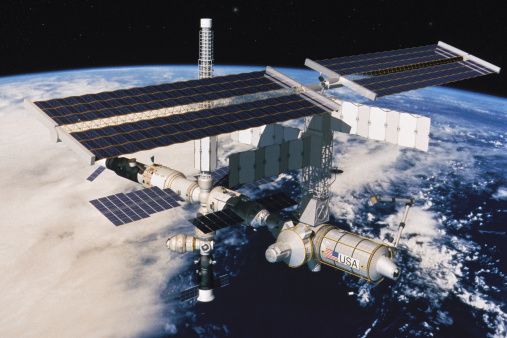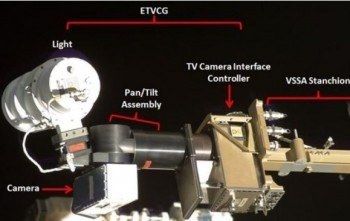
Stockbyte/Getty Images
Why isn't the International space station lit up at 'night'? originally appeared on Quora: the place to gain and share knowledge, empowering people to learn from others and better understand the world.
Answer by Jared Olson, NASA robotics instructor, on Quora:
If you're asking why the exterior of the ISS is not more illuminated at night, I have your answer: most of the lights are burned out.
Yes, humanity's crowning engineering achievement doesn't use LEDs for its exterior lights.
It's true that there's not much reason to keep it illuminated all the time even if we did have the lights - most of the time no one has to see the outside, it would waste electricity, and it wouldn't significantly affect the visibility of the ISS from Earth assuming you wanted to see it. To be honest, the power usually isn't a big issue, these lights only pull a few watts and the solar arrays generate ~100 kilowatts of electricity for free from the sun.
But sometimes we do want to be able to see outside - during EVAs and robotics operations we need to see what's going on via video feeds. Yes, some of the time will be lit by the sun, but the other half of the time we don't want to stop and wait because we can't see. This is especially important for robotics since much of what we do is remotely controlled by us at Mission Control (called ground controlled (GC) robotics to differentiate from astronaut controlled robotics). In contrast, EVA crew members have lights on their suits to illuminate their work area and while the ground flight controllers monitor the EVAs via video, it is not critical that they see everything.
If we are doing robotics ops close to structure we must have video confirmation of our clearance to structure and verify that everything in the area matches our computer simulations. If it's dark out, we need lights in order to do this. There are lights mounted to all of the external video cameras which include External Television Camera Groups (ETVCG below, one of the most unwieldy acronyms I've seen), the robotics mounted cameras, and the Japanese exposed facility cameras.

For scale this stanchion is like 6 ft long:

Most of these lights are composed of two main bulbs that alternate every time power is first applied to the light. That way they both get used equally. If one burns out, the other can still be used. But most of these lights have been in space for over ten years and now the majority of them are totally dead, while others are dimming. LED technology wasn't ready yet when these were designed and it would take a lot of money to design LEDs that could be plugged into the existing sockets. Another way LEDs would help is with the heat generated by these huge lights - sometimes we have to turn off the lights on the robots because they start to make the camera and nearby components too hot - LEDs would not have as much of a problem with this. In addition, some of the robotic cameras perform very poorly in low light conditions, the views get very noisy and grainy.
The only way to fix these lights is to do it via EVA or robotically with Dextre, both of which take a ton of planning and work to pull off. This is assuming they could get NASA planning priority to begin with, which they probably couldn't. If they continue to burn out, we'll eventually get priority because it will get to a point where we just can't do close-contact robotics at night without new lights, which could essentially double the time it would take us to do things. Other ISS system disciplines already bend over backward to help support robotics as it is. In the meantime we'll live with what we have and stand down on operations when we need to.
Usually there are no external lights on. Things are even less visible than below in regular external camera views since this is a time exposure:

How many NASA man-hours does it take to change an ISS light bulb?
Uh...thousands?
This image from astronaut Thomas Pesquet perfectly illustrates the dynamic and varied lighting conditions. Brightly illuminated by an ETVCG light is the robotic system maneuvering a science payload at night.

This question originally appeared on Quora - the place to gain and share knowledge, empowering people to learn from others and better understand the world. You can follow Quora on Twitter, Facebook, and Google+. More questions:
